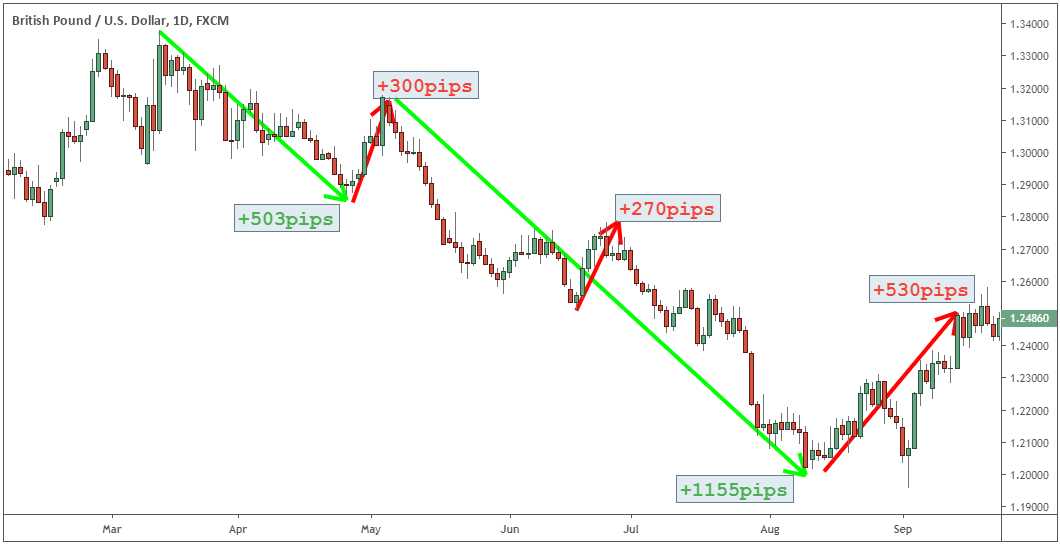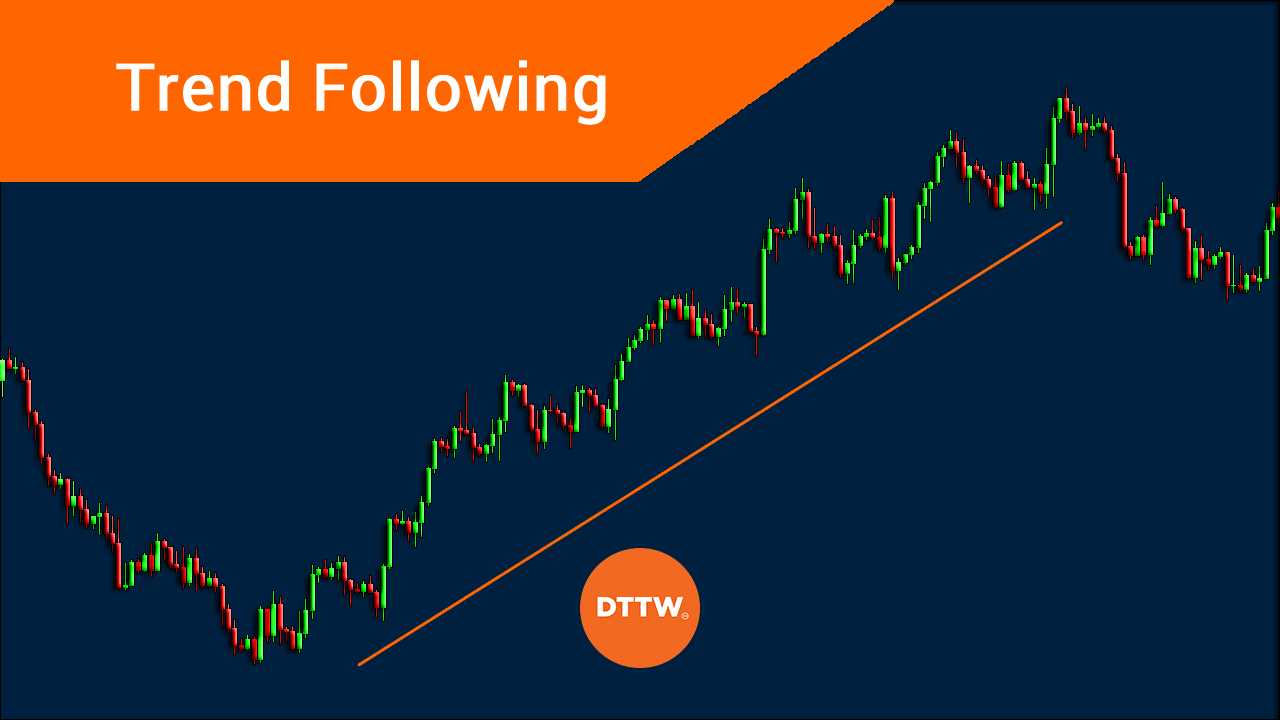Trend Trading: A Profit-Oriented Strategy Explained
Trend trading is a popular strategy used by traders to profit from the direction of market trends. It involves identifying and trading in the direction of the prevailing trend, whether it is up or down.
When implementing trend trading strategies, traders look for patterns and signals that indicate a trend is in place. These patterns can be found in various technical indicators such as moving averages, trendlines, and chart patterns.
Trend trading is based on the belief that markets tend to move in trends, and by following these trends, traders can increase their chances of making profitable trades. Traders who employ this strategy aim to ride the trend for as long as possible, maximizing their profits.
There are two main types of trends that traders look for: uptrends and downtrends. An uptrend occurs when the price of an asset is consistently making higher highs and higher lows. A downtrend, on the other hand, is characterized by lower highs and lower lows.
Traders can use various tools and techniques to identify trends, such as trendlines, moving averages, and trend indicators. These tools help traders determine the direction of the trend and make informed trading decisions.
The Benefits of Trend Trading
Trend trading offers several benefits to traders. Firstly, it allows traders to align themselves with the overall market direction, increasing the probability of successful trades. By trading in the direction of the trend, traders can avoid counter-trend trades that often result in losses.
Secondly, trend trading can provide traders with high-profit potential. By riding a trend for an extended period, traders can capture significant price movements and generate substantial profits.
Lastly, trend trading can be relatively simple to implement. Traders can use a variety of technical indicators and tools to identify trends, making it accessible to traders of all experience levels.
Implementing Trend Trading Strategies
When implementing trend trading strategies, traders should first identify the prevailing trend. This can be done by analyzing price charts and using technical indicators. Once the trend is identified, traders can enter trades in the direction of the trend, either by buying or selling.
Traders should also consider setting stop-loss orders to protect against potential losses. Stop-loss orders are placed at a predetermined price level and automatically close the trade if the price moves against the trader’s position.
Additionally, traders can use profit targets to lock in profits. Profit targets are set at a predetermined price level and automatically close the trade when the price reaches that level.
Trend trading is a popular strategy used by traders to take advantage of the directional movement of financial markets. It is based on the belief that markets tend to move in trends, whether it is an uptrend (bullish) or a downtrend (bearish). By identifying and following these trends, traders aim to profit from the price movements.
How does trend trading work?
When engaging in trend trading, traders analyze historical price data to identify patterns and trends. They look for specific chart patterns, such as higher highs and higher lows in an uptrend, or lower highs and lower lows in a downtrend. These patterns help traders determine the direction of the trend and make informed trading decisions.
Once a trend is identified, traders aim to enter positions in the direction of the trend. For example, in an uptrend, traders would look for opportunities to buy or go long, expecting the price to continue rising. In a downtrend, traders would look for opportunities to sell or go short, expecting the price to continue falling.
Key principles of trend trading
There are several key principles that traders follow when engaging in trend trading:
1. Trend is your friend: The saying “the trend is your friend” is a fundamental principle of trend trading. It emphasizes the importance of trading in the direction of the trend, as trends tend to persist and can provide profitable opportunities.
2. Trend identification: Traders use various technical indicators and chart patterns to identify trends. Moving averages, trendlines, and price patterns are commonly used tools for trend identification.
3. Entry and exit points: Traders look for specific entry and exit points to enter and exit positions. These points are often based on technical indicators or price levels that indicate a potential reversal or continuation of the trend.
4. Risk management: Trend traders implement risk management strategies to protect their capital. This may include setting stop-loss orders to limit potential losses and using proper position sizing techniques.
Advantages of trend trading

Trend trading offers several advantages for traders:
1. Profit potential: By trading in the direction of the trend, traders can potentially capture larger price movements and generate profits.
2. Simplicity: Trend trading is a relatively simple strategy that can be easily understood and implemented by traders of all experience levels.
3. Reduced market noise: By focusing on trends, traders can filter out market noise and avoid getting caught up in short-term price fluctuations.
4. Long-term profitability: Trends can persist for extended periods, allowing trend traders to potentially profit over the long term.
Conclusion
The Benefits of Trend Trading
Trend trading is a popular strategy used by traders to profit from the directional movement of financial markets. It involves identifying and following trends in asset prices, whether they are going up (bullish) or down (bearish), and taking positions accordingly. This strategy is based on the belief that trends tend to persist over time, allowing traders to capture substantial profits.
1. Profit Potential

One of the key benefits of trend trading is its profit potential. By identifying and riding trends, traders can take advantage of the momentum in the market and generate significant returns. When a trend is established, it can continue for an extended period, providing ample opportunities for traders to profit. By staying in the trade until the trend reverses, traders can maximize their gains.
2. Reduced Risk
Trend trading also offers the advantage of reduced risk compared to other trading strategies. By following the direction of the trend, traders are aligning themselves with the market forces that are driving prices. This reduces the likelihood of being caught on the wrong side of the market and experiencing significant losses. Additionally, trend traders can use stop-loss orders to limit their risk and protect their capital.
3. Simplicity
Trend trading is a relatively simple strategy that can be easily understood and implemented by traders of all experience levels. It does not require complex technical indicators or extensive knowledge of fundamental analysis. Instead, it focuses on identifying and following trends using basic chart patterns and price action. This simplicity makes trend trading accessible to a wide range of traders.
4. Flexibility
Trend trading is a flexible strategy that can be applied to various financial markets, including stocks, currencies, commodities, and indices. This allows traders to diversify their portfolios and take advantage of opportunities in different asset classes. Additionally, trend trading can be used in conjunction with other trading strategies, such as breakout trading or mean reversion, to enhance overall trading performance.
5. Emotional Discipline
Trend trading promotes emotional discipline, which is crucial for successful trading. By following predefined rules and sticking to the strategy, traders can avoid impulsive decisions based on fear or greed. This helps to eliminate emotional biases and ensures that trading decisions are based on objective analysis. The disciplined approach of trend trading can lead to more consistent and profitable trading results.
| Benefits of Trend Trading |
|---|
| Profit Potential |
| Reduced Risk |
| Simplicity |
| Flexibility |
| Emotional Discipline |
Implementing Trend Trading Strategies
Trend trading is a popular strategy used by traders to profit from the directional movement of financial markets. It involves identifying and following the trend of a particular asset, whether it is going up (bullish trend) or down (bearish trend), and making trades based on that trend.
To implement trend trading strategies effectively, traders need to follow a systematic approach. Here are some key steps to consider:
1. Identify the Trend:
The first step in implementing a trend trading strategy is to identify the trend. This can be done by analyzing price charts and using technical indicators such as moving averages, trendlines, and oscillators. Traders should look for patterns and trends that indicate the direction of the market.
2. Confirm the Trend:
Once the trend is identified, it is important to confirm its validity. Traders can use additional technical indicators or fundamental analysis to confirm the trend. This helps to reduce the risk of false signals and increases the probability of successful trades.
3. Determine Entry and Exit Points:
After confirming the trend, traders need to determine the best entry and exit points for their trades. This can be done using various technical analysis tools, such as support and resistance levels, Fibonacci retracements, or trendline breaks. Traders should also consider risk management techniques, such as setting stop-loss orders to limit potential losses.
4. Set Profit Targets:
Traders should set profit targets based on their risk-reward ratio. This means that the potential profit should be greater than the potential loss for each trade. Profit targets can be set using technical analysis tools, such as previous price levels or Fibonacci extensions.
5. Monitor and Adjust:
Once trades are executed, it is important to monitor the market and adjust the strategy if necessary. Traders should regularly review their trades, analyze the market conditions, and make adjustments to their strategy if needed. This helps to adapt to changing market trends and maximize profits.
Implementing trend trading strategies requires discipline, patience, and continuous learning. Traders should also be aware of the risks involved and use proper risk management techniques. By following a systematic approach and staying focused on the trend, traders can increase their chances of success in trend trading.

Emily Bibb simplifies finance through bestselling books and articles, bridging complex concepts for everyday understanding. Engaging audiences via social media, she shares insights for financial success. Active in seminars and philanthropy, Bibb aims to create a more financially informed society, driven by her passion for empowering others.
